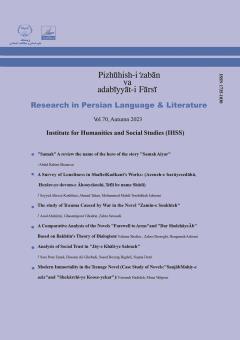Naturalism is a literary perspective that considers the behaviors, attitudes and thoughts of humans originated from inner instincts and natural urge. According to the theory of naturalists, all the facts and phenomena in nature are in the field of scientific knowledge a
More
Naturalism is a literary perspective that considers the behaviors, attitudes and thoughts of humans originated from inner instincts and natural urge. According to the theory of naturalists, all the facts and phenomena in nature are in the field of scientific knowledge and can be justified by the laws of natural sciences.in the other words, naturalism is the formula for the application of modern science in literature.Naturalism emphasizes aspects of inheritance, environment, definitive fate, see life away from idealism and negating supernatural issues in literature,and in this way draws details which are generally ugly and disgusting. After the constitution, literary naturalism entered the field of Persian fiction through the translation of literary works and influenced writers such as SadeghChobak, SadeghHedayat, Ahmad Mahmoud, Mohammad Masoud, Ismail Fasih, etc.Examining the literary works of holy defense shows the existence of some prominent elements of naturalism such as objectivism, pessimism, black thinking, extensive description of war disasters, rare use of some unconventional expressions about warriors, attention to the science of physiology, and so on taht are seen in some of such works.This research has analyzed some of the characteristics of naturalism in the two novels "Zamestan 62" by Ismail Fasih and "Safar be Geray-e 270 Darajeh" by Ahmed Dehghan using a descriptive-analytical method and with the help of library sources.The result of the investigation based on the textual evidence shows that some naturalistic elements are prominent in these two works.It can be said that what distinguishes naturalistic works from other writings can be identified in these two novels.
Manuscript profile


